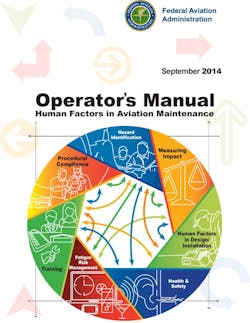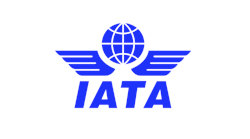Aviation maintenance technician schools (AMTS) prepare students for the A&P certification by helping them develop critical technical skills and knowledge. But, they do more than that. Schools plant the foundation to ensure that new workers appreciate and understand safety and how to work in a safe culture. This article talks about that critical aspect of training.
ATEC Annual Meeting
This issue of Aviation Maintenance Technology magazine covers the April annual conference of the Aviation Technician Education Council (ATEC). This article acknowledges the excellence and range of topics covered at the four-day meeting. The focus here switches to risk-based decision making (RBDM) and safety culture and what it can mean for school curricula. The information below summarizes the author’s presentation to ATEC. It also includes comments about how schools are using FAA instructional materials.
Targets of Training Opportunity
Schools strive to train for “real-world” challenges. What better way than to address the challenges than to look at a recent FAA study (See AMT Sept. ‘14) of U.S. and international challenges in maintenance human factors? The top five are: safety culture/leadership; technical documentation; fatigue; voluntary reporting; and return on investment in safety. To address these challenges FAA and industry combined talent to publish the Operator’s Manual for Human Factors in Aviation Maintenance (See AMT Oct. ’14 and www.humanfactorsinfo.com). That seven chapter book dedicated five chapters to the key challenges (See Figure 1).
The Challenge of Hazard Identification
The FAA Administrator, Mr. Michael Huerta, ranked risk-based decision making at the top of the list of strategic priorities and initiatives for 2014-17. In order to accomplish that initiative it is necessary to collect the right data and then base decisions and resources on the highest risks. Thus, the ATEC presentation took that focus, especially on how the new Operator’s Manual for Human Factors in Maintenance can help.
The first chapter of the Operator’s Manual on Hazard Identification is an example of the format of the entire book. Drs. William Rankin and Maggie Ma, past and present Boeing leads on the Maintenance Error Decision Aid (MEDA), wrote the chapter based on delivery of MEDA and other hazard identification training to over 800 airline maintenance organizations, over the past two decades. With the advent of regulations requiring safety management systems the need for systems to voluntarily report system hazards or human error is important. But hazard identification processes and forms must be preceded by a culture change where management, workers, and regulators place emphasis on voluntary reports that do not result in unjust disciplinary reaction. That culture change must begin in the aviation maintenance technician schools.
There are three categories of hazard identification necessary for a safety management system. They include reactive, proactive, and predictive data collection. The reactive data is merely a system that waits for something to go wrong and then explains why. The proactive data comes from traditional audits/reviews of your organization to help assess the current operational, regulatory, and safety state. The third type of data is predictive. Predictive data can be generated by a culture that observes the strengths and weaknesses of the organization to predict where the next hazard might occur. Recent advances in daily formal peer-to-peer observations (aka, Line Observation Safety Assessments) are an excellent means to collect predictive data and to foster safety culture.
Simply stated, the categories consider the past, present, and future respectively. A car analogy works here and is shown in Figure 2. Look out the windshield of your car to see your current location, direction, speed, and more. The rear view mirror, much smaller than the windshield, provides important information. In this analogy, size matters. That suggests predictive and proactive safety assessments are the most important. Schools generally agreed the importance of ensuring that students inculcate safety culture into their technical skill set and certification.
AMT Schools and Human Factors Training
The AMTS schools were very positive about the importance of introducing human factors (HF) fundamentals within the curriculum. There were concerns that the general portion of the AMT written and oral exam has specific test questions. Yet, there is not an explicit requirement to include HF content. This author responded that HF is merely a key part of overall training for personal and flight safety awareness. The few HF-specific test questions are 100 percent covered in the short Chapter 14 of the AMT Handbook – General.
I was pleased to receive feedback that many schools are using materials from the FAA human factors website (www.humanfactorsinfo.com). Users of FAA HF materials include the Aviation Institute of Maintenance schools, Texas State Technical College, Sinclair Community College, Spartan College, and more. The schools also commented that the materials from the Civil Aviation Authorities of Australia and the UK were excellent. Guidance from EASA Modules 9 also was mentioned by some schools. Most importantly, I made it clear that the schools do not have to reinvent HF training materials because they are widely available and no/low cost.
I revisited the importance of offering human factors and hazard identification that students can remember. The PEAR model (See AMT April ’15) remains as a way to help students apply human factors principles to their learning and, eventually, work environment. For more information about PEAR, the Ops Manual, human factors, and safety management go to the FAA human factors website.





